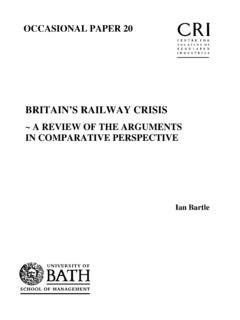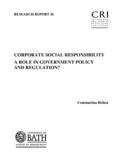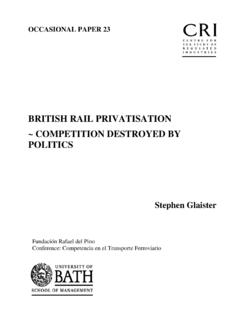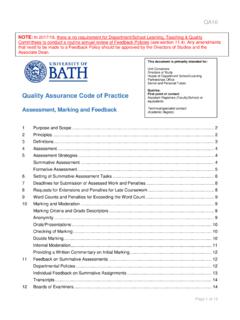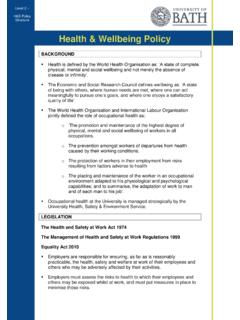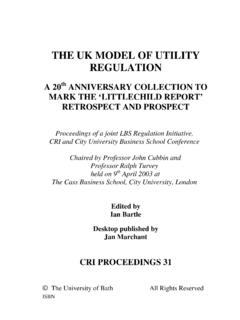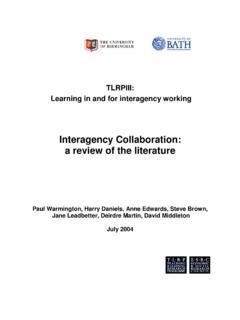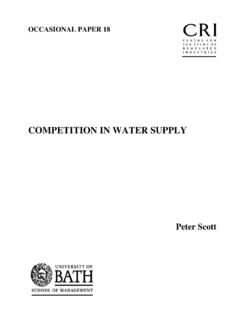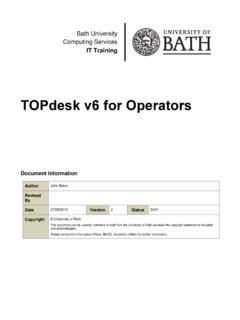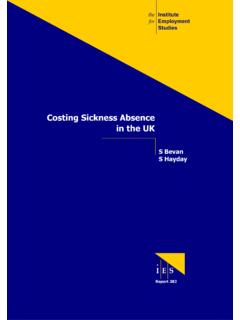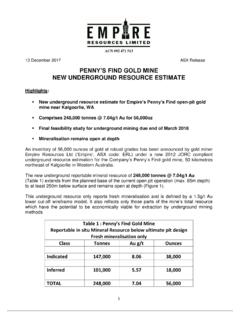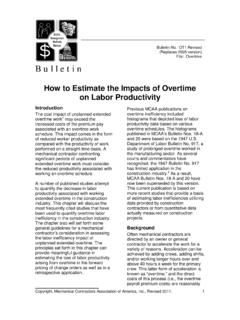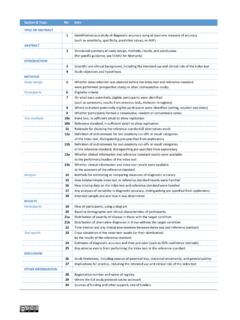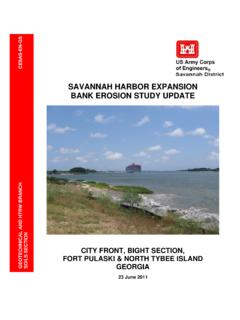Transcription of WHAT ARE MARGINAL COSTS AND HOW TO ESTIMATE …
1 TECHNICAL PAPER 13 what ARE MARGINAL COSTS AND HOW TO ESTIMATE THEM? Ralph Turvey what ARE MARGINAL COSTS AND HOW TO ESTIMATE THEM? Professor Ralph Turvey Desktop published by Jan Marchant The University of Bath All rights reserved ISBN iii Preface The CRI is pleased to publish what are MARGINAL COSTS and How to ESTIMATE them? as CRI Technical Paper 13. A distinguished economist, Professor Ralph Turvey developed the thinking on MARGINAL cost , notably in his 1969 paper in the Economic Journal, which, here, he modestly, but incorrectly, refers to as expositions in long-forgotten works.
2 Privatisation, incentive regulation and the introduction of competition has revitalised the debate on the theory and practice of measuring MARGINAL COSTS , and Professor Turvey s paper well demonstrates how important it is to be clear about matching the appropriate definition of MARGINAL cost to the objective in mind. The paper brings together a rigorous analysis of the principles of MARGINAL cost with comparative analysis of its application in different regulated sectors. It should, therefore, contribute to both academic and policy debate.
3 The CRI would welcome comments on this paper and further analytical work in the area. Comments, enquiries or manuscripts to be considered for publication should be addressed to:- Peter Vass Director CRI School of Management University of Bath Bath, BA2 7AY The CRI publishes work on regulation, by a wide variety of authors and covering a range of regulatory topics and disciplines, in its International, Occasional and Technical Paper series. The purpose is to promote debate and better understanding about the regulatory framework and the processes of decision making and accountability.
4 The views of authors are their own, and do not necessarily represent those of the CRI. Peter Vass Director, CRI March 2000 iv v Contents Preface iii Principles Economic concepts A simple constructed example A different approach Probability 1 Case studies - Electricity Electricity generation Electricity transmission Electricity distribution 13 - Gas transmission 29 - Water supply Resources Distribution 33 - Railway MARGINAL COSTS Short-run track COSTS Short-run congestion COSTS Long-run COSTS 37 Traps to avoid Treating depreciation as a cost component Modern equivalent asset value Stand alone cost not relevant
5 Unless a plausible possibility OFTEL s Long-Run Incremental cost 41 Conclusions 45 vi RALPH TURVEY Ralph Turvey is visiting professor in regulation, London School of Economics 1 PRINCIPLES Economists tend to think about COSTS in terms of static, timeless models with continuous cost functions. The real context is, however, one of businesses and systems which already exist and have accumulated a collection of assets of various vintages whose accounting cost reflects past prices, past circumstances and arbitrary conventions about depreciation.
6 In the applied economics context, such as utility regulation, the textbook theory is of no help. This paper sets out a more useful approach, with examples partly following expositions in long-forgotten works1. Economic concepts Economic vs accounting cost cost analysis and the allocation of cost can mean both: attributing causality, that is, asking how cost would change if output changed. This is an economic question which serves decision-making. Since these decisions relate to the future, the estimation of economic cost involves comparisons between future alternatives; determining revenue requirements for fixing prices, that is, deciding which customers should contribute how much towards covering accounting COSTS , including a target profit.
7 This can be either a business or a political issue about perceived fairness. The distinction between economic cost and accounting cost is particularly important in relation to existing assets. The economic cost of using them may be very different from their accounting cost , whether this depreciation reflects historical or replacement cost : if they could be rented, as with commercial premises, buses or planes, their economic cost is the rent that could be obtained; 1 Turvey, R (1968) Optimal pricing and investment in electricity supply, Allen and Unwin.
8 The contributions of French electricity economists deserve recognition; they were made available in translation in Nelson, J [Ed] (1964) MARGINAL cost pricing in practice, Prentice Hall International. Turvey, R. (1969) MARGINAL cost , The Economic Journal, , June 1969, Littlechild, S (1970) MARGINAL cost pricing and joint cost , The Economic Journal, , June 1970. Turvey, R (1971) Economic analysis and public enterprises, Allen and Unwin, chapters 6 and 7. what ARE MARGINAL COSTS ? if they could be sold, even if only for scrap, the economic cost of using them for a year is their operating cost plus the excess of what they could be sold for now over the discounted value of what it is guessed they could be sold for at the end of the year; if they would have to be expensively decommissioned, the economic cost might even be negative.
9 The economic COSTS and the values of existing assets are two totally different things. To say that an existing asset such as a railway line in a tunnel or a water main under a street may cost very little to use does not necessarily mean that it has a low value. They are defined as follows: economic cost , as just described, is the value of the sacrificed alternative (opportunity cost ), that is, what would be done with an asset if it were not used for production; value is the effect upon the present worth of the enterprise s future cash flow of an asset vanishing in a puff of smoke deprival value (this may equal replacement cost or may even equal depreciated historic cost ).
10 If, under this scenario, the best alternative is to build a new generating station which would burn a different fuel and, being new, would last longer; then the calculation of deprival value would not be simple. Any excess of value over economic cost is an economic rent. MARGINAL cost MARGINAL cost is an ESTIMATE of how economic cost would change if output changed. MARGINAL means a first derivative, but in practice, because of indivisibilities in plant sizes, we are often interested in the per unit change in cost that will be caused by a substantial change in a future output, not of a one unit change.
